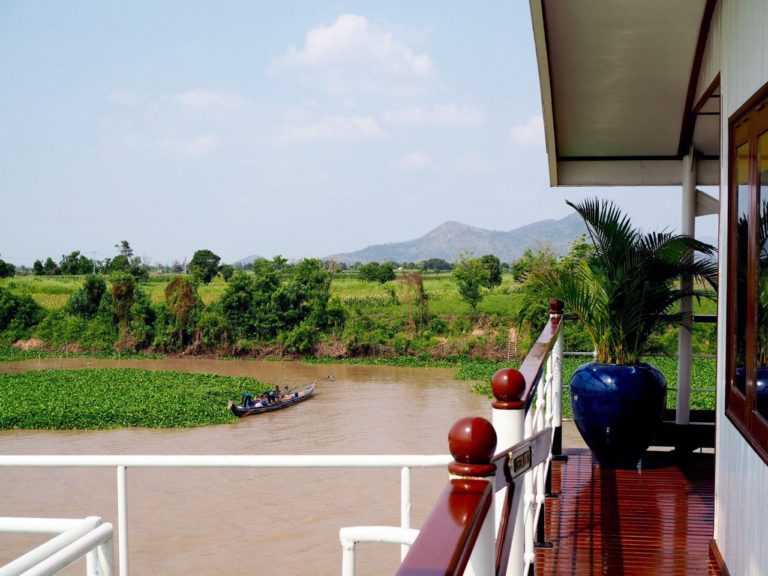4 days on a Mekong river cruise in Cambodia
The muggy, sweltering air hits my nostrils as soon as I exit the plane — the fourth in less than 36 hours but I know full well that the drawn-out journey to Siem Reap will be generously rewarded. This is the start of a dream voyage that will take me from the Angkor temples to the roaring mayhem that is Phnom Penh following the bends of the mythical Mekong River, peeking at floating villages and Buddhist monasteries along the way. It’s a river cruise in Cambodia like no other!
I’ve only been here for a few days and yet I’ve already come to the realisation that the primary force of attraction, here, is not something that tourists will find in glossy brochures.
Neighbouring Thailand might informally be known as the “country of smiles” but truth be told, the praiseworthy title might as well have been awarded to Cambodia; its inhabitants are some of the most amicable I’ve met despite the profound wounds caused by the sanguinary genocide — call a spade a spade — led by Pol Pot against its own people in 1975 and the modest, if not downright difficult conditions in which the vast majority still live in nowadays. They’ve turned out to be one of the strongest archetypes of resilience and unconditional kindness I’ve come across to this day.
My summary of a transformative 4-day trip in Cambodia.
A worthwhile detour to Siem Reap and Angkor Wat temples
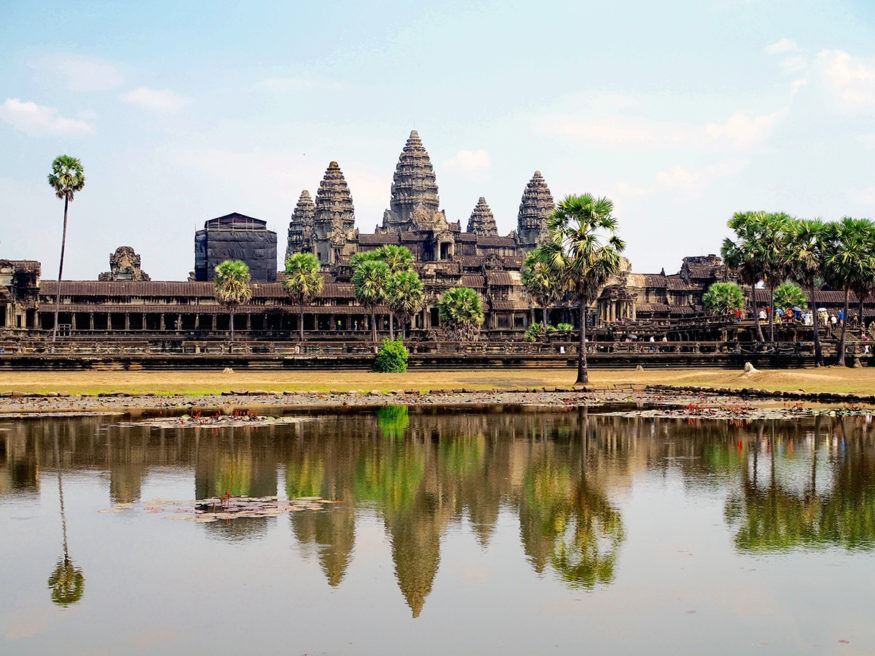
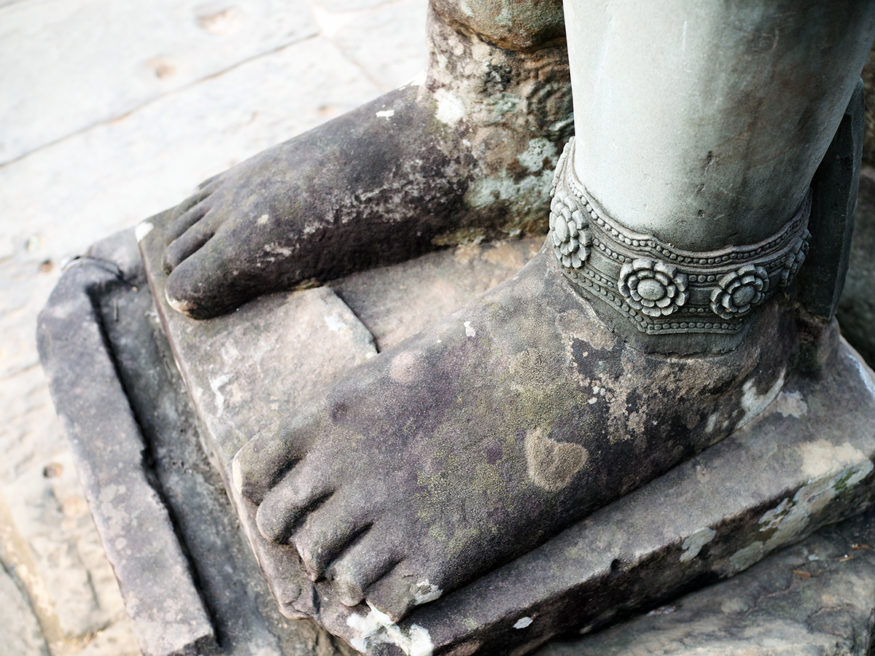

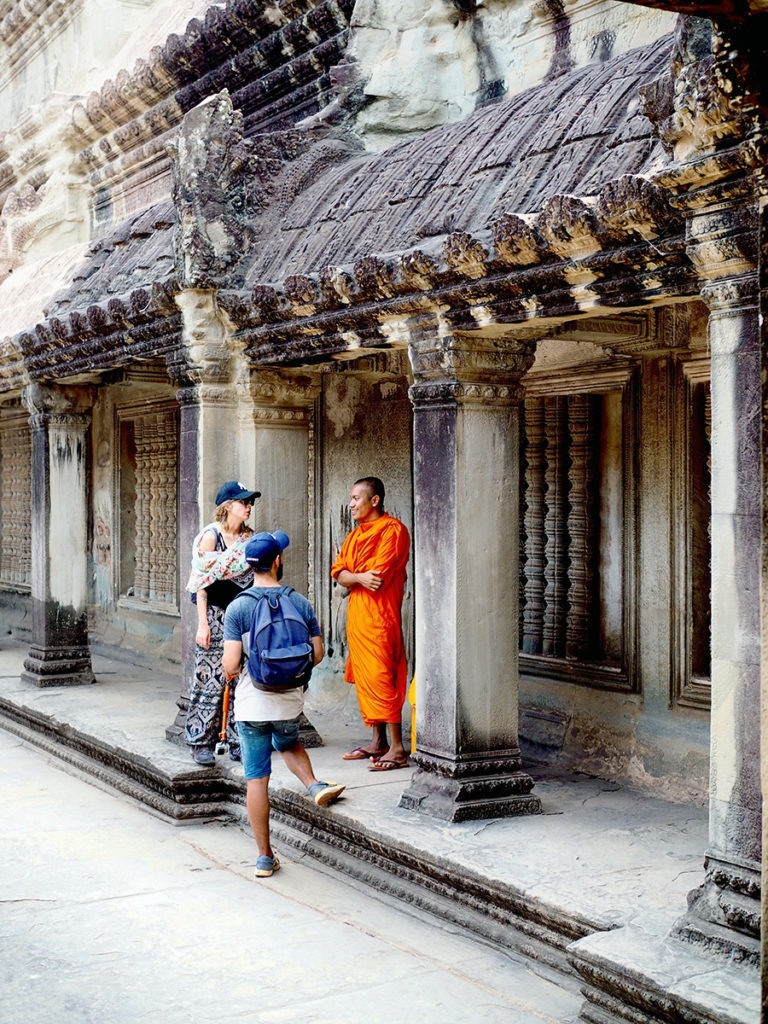

Although the Pandaw river cruise technically starts 250 kilometres south of Siem Reap in Kampong Cham, it would simply be inconceivable to trek all the way to Cambodia and skip its UNESCO World Heritage Angkor temples.
For once, jetlag is my friend and I wake up at the break of dawn to the first rooster crow. It’s just as well: I’ll be one of the first visitors to get to the temples, thus avoiding the masses, the sun’s zenith and its inevitable, overpowering warmth — it’s only 6AM in Siem Reap and we’re well on our way to a balmy 30 degrees. Best to make the most of my morning while it’s still manageably warm.
The velvety sunrise casts a golden light on all of Angkor for a truly magical welcome. At this hour, only early-rising tourists and agitated rhesus macaques rustling leaves on their daily harvest trouble the utter tranquillity and stillness of the temples. For a minute, I feel completely alone within these walls and I am left speechless (a notable rarity) before the sheer size and complexity of the site.
My guide Te skilfully explains the history and legends of the Khmer Empire in the 12th century as well as the numerous subtleties of the Buddhist and Hindu bas-relief of the many temples we are exploring together. Overall, it was a rather speedy visit, considering the UNESCO site encompasses roughly 280 temples; but after admiring the Buddha faces around Bayon, the overgrown greenery over at Angkor Thom and the marvellous architecture of Angkor Wat, I am simply extenuated by the humid heat and the 12 million steps I walked (rough estimate) and I am, truthfully, looking forward to a poolside break at the Lotus Blanc 5* resort. The night concludes with a delectable Khmer curry served in a banana leaf at Genevieve’s on Sok San Street and a surprising circus inspired by Cambodian history.
+
cambodia travel tips
Sailing along the Mekong’s curves

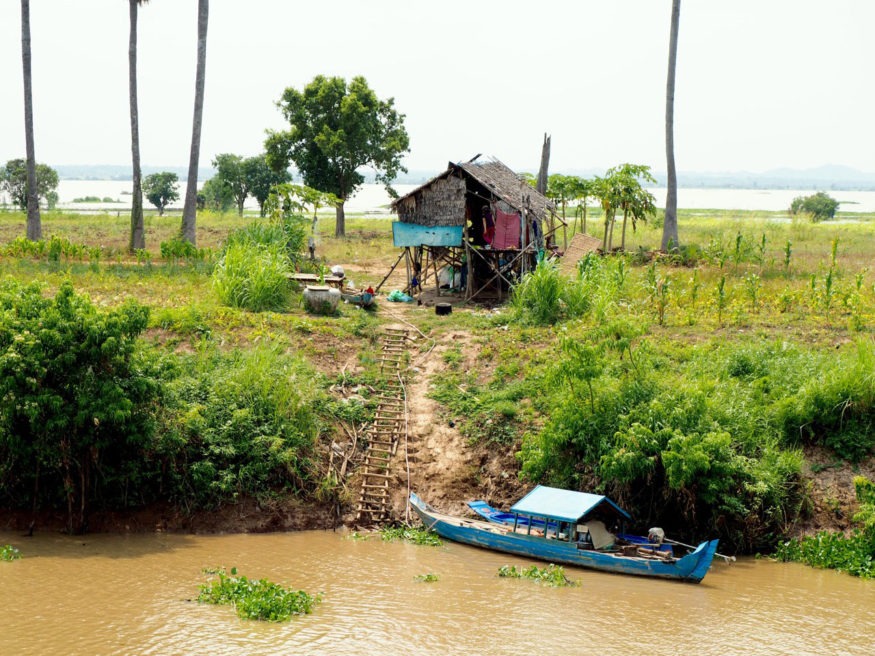


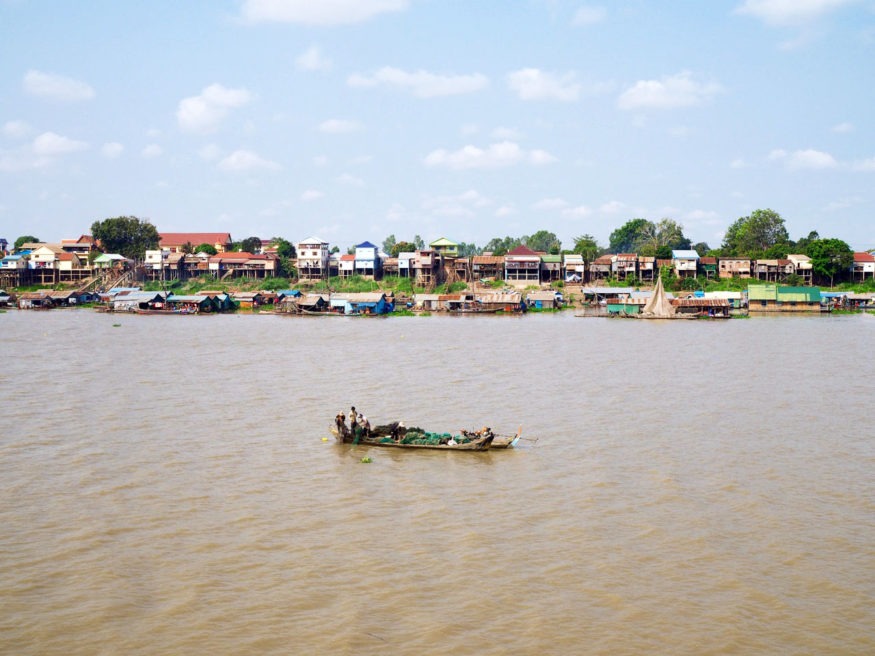


There is no doubt that the country’s two major cities are growing at an unprecedented rate. However, it’s not until I make it to the countryside that I can fully grasp the reality of life in Cambodia. It should be noted that this Mekong river cruise in Cambodia also includes a sailing on the Tonle Sap river.
From the hustle of Siem Reap to the small port town of Kampong Cham, where we embarked on the Pandaw II ship.
Here, the curiously flat landscapes are dotted with stilt houses — that are no only used as protection during monsoon and as an improvised cowshed but also to, symbolically, get closer to the gods — in addition to water buffalos and skinny Brahman cows thriving in a luxuriant vegetation. Oh, how fertile and generous these lands are!
But what my fellow cruise mates and I preferred, with a crushing majority, are the toddlers and teenagers impatiently waiting for the boat to navigate past their house while shouting “Hello! Hello! Hello!” at the top of their lungs — possibly the only English words they’ll ever know — and vigorously waving their hands at us.
Contrarily to kids forced to harass tourists by their parents at the temples, these fellas are simply, genuinely happy to have people over however brief the visit. It’s in these parts of Cambodia, far from the madding crowds and the urban cacophony, that I will truly be able to communicate with locals despite the incalculable cultural gap that separates us. From the holey smile of the fishmonger to the little girls who brought me freshly picked coral-hued flowers — the irony is not lost on me that it’s often those who have nothing to give who will surprise you the most.
These encounters are now a truly unforgettable memory for me.
Out of the many stops along this Mekong river cruise in Cambodia, four were particularly noteworthy:
- The absence of crowds at the colourful Wat Preah Angkoak temple
- The silversmith community at Prek Kdam
- The primary school at Angkorban
- The floating village of Kampong Chhnang
Comprising a few hundred houses built atop bamboo trees and artisanal fish farms, this village is painted in almost every shade of blue to honour Norodom Sihamoni, the King of Cambodia. This is also where visitors will find a lively yet rather primitive fish market, which, despite its irrefutably fetid smell, is still well worth a look in order to fully understand how people live in the Tonle Sap area.
Phnom Penh


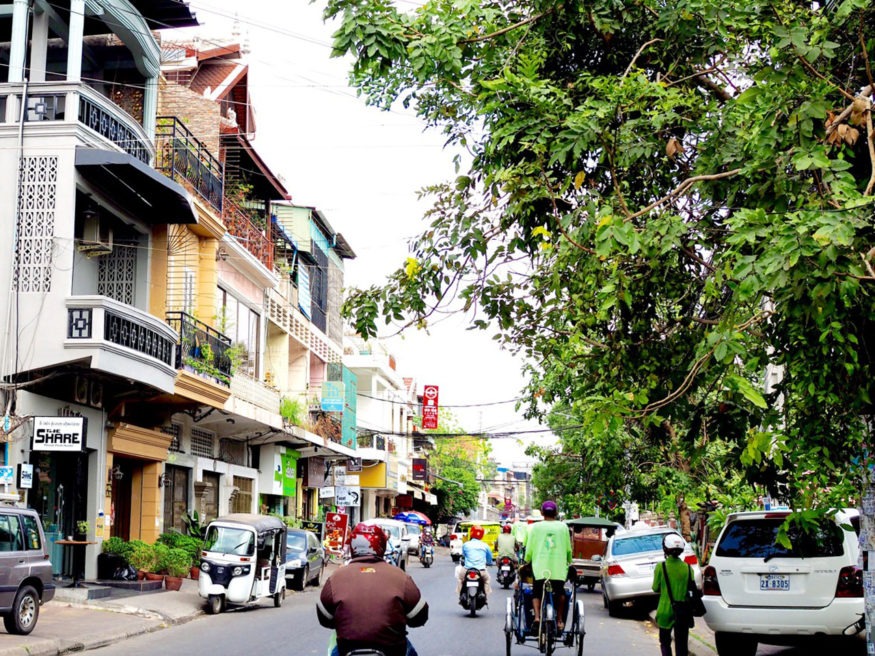

No doubt here: we’ve definitely left the peaceful countryside behind on the last stop of our river cruise in Cambodia.
Singing birds have been replaced with honking tuk-tuks and the reddish-ochre Mekong riverbanks have made way to an amalgam of mismatched buildings with a certain je-ne-sais-quoi dating back to the French colonial era. Phnom Penh is truly where Cambodian chaos culminates with no sidewalks, no seat belts, no lanes, no traffic lights, no rules. Mysteriously enough, I have not witnessed any accident in this sojourn although I did suffer from several minor heart attacks as zooming cars cut off the rickshaw I was sitting in by just a few centimetres.
A little too close for comfort, and yet, not one limb casualty to report.
Once dubbed “the pearl of Asia”, Phnom Penh is a definitive assault on the senses after the quietude of the countryside but its Royal Palace, its National Museum, its diverse markets and its expanding café-terrace culture make it an interesting destination, along with its tragic modern history.
Not unlike most Cambodians, the close family of my guide Som was deeply affected by Pol Pot’s merciless regime which resulted in subsequent deaths of several family members, including a few he even had to witness with his own eyes. My heart sinks while listening to his recount. Visiting tragically yet aptly named Killing Fields and the Tuol Sleng genocide museum, both in Phnom Penh, suddenly hits much closer to home and takes on a new perspective. The horrendous acts performed within these walls are simply indescribable and I can barely bring myself to step into the succession of rooms filled with photographs of victims taken before their untimely demise. Not one person exits the gates without a dull look, troubled by the inherent horror of the museum and the sombre realisation that even four decades later we are not any safer from such heinous acts.
Clearly, Phnom Penh isn’t for the faint-hearted. It lacks the enchantment and mystique of the Angkor Temples and it can be overwhelmingly busy at times; on the other hand, it simply must be seen once in a lifetime simply to honour the genocide’s two million victims.




